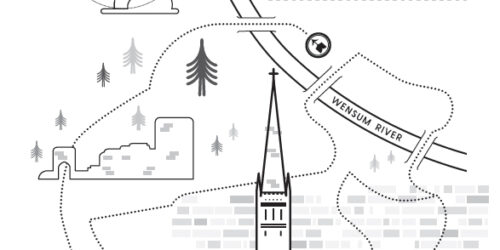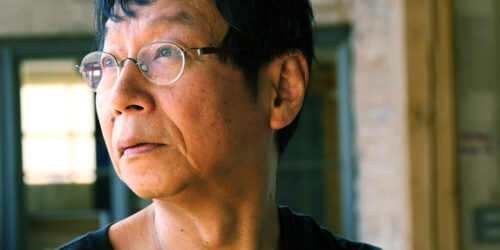
‘Running, to me, is a story in itself. Every run is its own narrative, and like stepping into the river, you can never run the same route twice.’
Run Norwich has been voted ‘The Best 10K in the United Kingdom’ according to their website but it takes place on 16 July, and I leave Norwich on 30 June. I am, to use the current youth vernacular, kinda bummed.
I shouldn’t be. I’m not here to run a 10K. I am here because I am writing a story, and in that story is a tailor (who has, in the course of the last three weeks, transformed into a full-blown couturier). He is (among many other things) dressmaker to wealthy Englishwomen circa 1890-1910. This, I would soon find out, is a phenomenally over-ambitious bit of plotting for a writer who is not English, not a dressmaker (my needlework skills end at putting buttons back on), and whose acquaintance with what women wore in this time period is largely confined to random words dropped in novels. (“Gracious, Mama, I must have a new reticule!” “My dear, your pelisse is in the mud.” “Good heavens! How much do we owe the mantua maker?” &c, &c)
That’s what I came to do, and the process of this research will be absolutely thrilling. For the first time, I was permitted to step behind the glass of the world’s costume museums, as it were. I experienced, among many incredible things, touching and seeing real, true-blue Norwich shawls (generously unfurled for me by the amazing Joy Evitt); finally holding an actual ‘fashion plate’, and looking at real dress patterns from the 1900s (my friends, if seamstressing was done by men, they’d call it Engineering and have degrees for it in all colleges, but because this spectacular three-dimensional feat of construction is mostly done by women, it’s just ‘sewing’). I was even given a sneak peek at a couple of actual period dresses, how they hook, lace, and cage the poor suffocated woman within into an 18-inch waist, and read extracts from letters from those very same women driven half-mad by their own undergarments.
I had the chance to meet many writers, all far more experienced than me, all of whom write about textiles and their history in one way or another – all of whom are also women. I previously knew Sarah Bower, my truly wonderful mentor, from her novel Needle in the Blood, through which I learned the fascinating history of the Bayeaux Tapestry; it’s she who helps me connect the dots. Frederick Worth and Paul Poiret might be famous couturiers, but who is doing the sewing? Women. Who is doing the spinning that becomes the yarn for Norwich shawls? Women. Who is operating the mill-machines? Women (and children). Will my tailor cut these wildly elaborate patterns himself, piece them out, put them together? Of course not. There will be women.
The process of my research, prompted by Sarah Bower, as well as by many other writers and researchers I met along the way (Amanda Addison, Linda Collins, Sarah Power, Joy Evitt, Ruth Battersby-Took – bless you all!) would take me all over Norwich, from the Castle Museum to the Bridewell, from Stranger’s Hall to the South Asian Collection, and all the bits in between. I knew I would have to get as familiar as possible with the city, as fast as possible.
I only know one way to learn how to get around a city, and that is to run it.
I couldn’t do Run Norwich – so I just, well, ran Norwich.
*
I am not a particularly fast runner. I have a ‘ooh shiny’ approach to running – toddle along, see something interesting, toddle towards it, take a photo, chat with a stranger, pat a dog, and toddle back vaguely in the right direction. This makes for some terrible marathon times, but some really cool experiences.
Running, to me, is a story in itself. Every run is its own narrative, and like stepping into the river, you can never run the same route twice. You’re always a little different, and the route is always a little different, even if it’s the exact same path. Every single one is a story, and I stored them all up faithfully over 25 days, to see which one was the most fun.
It’s this one.
It’s 6am and the sun is out, but not a lot of people are. When I leave Dragon Hall, and take St Julian’s bridge and turn left, I know that an elderly gent will be walking his dog, and we say ‘good morning’ as I joggle past.
The River Wensum is still as a mirror. Past the Compleat Angler, there is a family of swans who have by now learned I do not carry bread for them. They sail along, dignified, ignoring the useless jogger who takes photos of them but offers no sustenance in return.
Norwich Railway Station, with its Victorian-age facade, is the first landmark. Not long ago, I took the train to London Liverpool St to meet with Singapore-based writer Vrushali Junnarkar, this year’s winner of Singapore’s Epigram Books Fiction Prize. Vrushali has lived in many cities – London is not her favourite, alas – and we swapped stories about things that often concern ladies who, like us, are past a certain age. The availability of clean public toilets. The wobbly mildness of a British takeout curry. The odd penchant certain young English girls seem to have for orange make-up and booty shorts when it’s five degrees out and there’s snow on the ground. The surprising tastiness of the chai we bought in Spitalfields Market.
Pull’s Ferry is my second favourite spot on the Wensum. Besides being reliably picturesque, the path to get around it is narrow, and cheerful pardon and thank you and good morning exchanges inevitably result as one narrowly avoids oncoming (faster) runners and dog walkers. The spire of Norwich Cathedral is also very prominent from here; sometimes you can hear the bells.
My favourite spot is the next one – Petch’s Corner and the Cow Tower. Cow Tower is an old artillery blockhouse – very old, having been built in 1398. You cannot get into Cow Tower (there is nothing to get into, anyway – it’s essentially just a circular wall now) but you can picnic around it, sit under its shade, and let your dog have a wee against its stones.
Cow Tower, to me, represents what Norwich is all about. All over Norwich there are preserved walls, timbered buildings, high dormer windows and sloping roofs that range from 200 to 900 years old, and they are not treated as precious things to be rented only to folks fabulously wealthy enough to afford to keep them shiny. Pubs are still pubs, hotels are still hotels. People still get married in public buildings of staggering age. Young folks get drunk and piss against the same wall their great, great, great, great, great, great grandfathers did. Norwich’s venerable architecture is still part of daily life.
Today, as I circle Cow Tower close-up (I always do, being fascinated by its nooks and crannies that remind me of my time being a parkour-ing Viking drengr in the game Assassin’s Creed), I spot three young folks who have jumped into the river and are having a brisk and ill-advised swim. It’s Saturday morning, so they have probably been up since Friday night, and have decided that a freezing-cold splash might be a fine way to sober up. It isn’t, but they look they’re having fun regardless.
St James Mill is the next landmark. The first time I saw it, it sort of snuck up on me. An odd thing to say for a building so massive, but I took a sharp turn and whomp! there it was. By now, however, I’ve picked the side of the river that allows St James Mill to emerge as an atmospheric picture-postcard round the riverbend, with drooping willows resting on the surface of the still water.
At this point I like to take a little detour across Jarrold Bridge, to have a nosey in Norwich’s oldest pub, the Adam & Eve. It has a cosy, Hobbiton-Prancing-Pony air which I like, even though (like any self-respecting pub) it won’t open til much later.
Here’s the nicest bit coming up now, and the most compelling reason to run along the Wensum – St George’s Green. I always look forward to popping up here, running the old cobblestone street, under the shade of picturesque red-brick buildings over 300 years old. This was the heart of the old shoemaking industry, and some of the buildings make up a campus of the Norwich University of the Arts.
It’s early on a Saturday, but I can see someone at work amid brilliant spools of thread framed by old-fashioned windows – the University, of course, has thriving garment, fashion and textile design courses, and all the most modern equipment that now goes hand-in-hand with that industry, likedigital printers and so forth. However, judging from the faint sounds coming from the open window, I’m pretty sure this person is operating a loom. I don’t know why anyone would want to pop into the uni for a spot of weaving at the crack of dawn on a Saturday (all right, it was dawn at 5am, but you know what I mean), but it certainly gives us some atmosphere.
And now we’re in my favourite place in all of Norwich – Elm Hill. You have to turn away from the riverside path to get there, and all the shops are closed (including the wonderful Dormouse bookshop), but I can’t get enough of Elm Hill, open or closed. It’s the city’s most well-preserved medieval street; the beautiful Briton Arms is where I had tea with Amanda Addison, and learned that the famous buta print (often called ‘paisley’) might have come from child-workers using the side of their hands to make patterns. Instant fascination, which led me to the place I have planned on visiting today, the South Asia Collection.
From Elm Hill, there’s a few options to loop back on. This day, I jog back via Tombland and past Norwich Castle. I never go by the Castle without hoping to come back when it’s no longer under renovation. Even in its current state, I spent almost four hours there, on my very first day in Norwich. It’s hard to focus on what I’m supposed to be writing about (textiles) when I’m distracted by so many other things (teapots).
*
I’m always running (distractedly) throughout the time I’m in Norwich. Among other things, it gives me an excuse to also enjoy Norwich market, in the form of ice cream, fish and chips, enormous empanadas, and a cheeky afternoon drink or two at Sir Toby’s Beers. But of course, it also gives me the impetus to write, and write, and write.
I realise people might wonder, why on earth would running give rise to writing? They seem like two diametrically opposite occupations.
One of my favourite writers, Malcolm Gladwell, is a famously talented runner. At 13 years old, he ran a 3:55 1500m (this is almost inhumanly fast, at least to me).
I confess: it’s from Malcolm Gladwell that I absorbed the concept that ‘running is a narrative’. Writers are, for the most part, not tremendously extroverted; to write requires the ability to sit still, alone, for a long hours at a stretch, conversing with imaginary people and moving through unreal spaces. Runners, for the most part, are doing exactly the same thing when we run. While we move through a physical world, we also move through a mental and spiritual one. Running, like writing, requires the extraordinarily unique human ability to be absolutely physically focused on one thing, yet at the same time, mentally and emotionally ranging through a hundred other things entirely unrelated to what our hands and feet are busy with.
Joyce Carol Oates is another writer who runs. A lot. She allegedly runs 6 miles a day, 6 days a week – this is enough mileage for her to run an ultramarathon at the drop of a hat, with relative ease. (An ultramarathon is any marathon greater than the standard 26.6 miles, or 42km.) Her description of why running goes so well with writing is probably the most beautiful I’ve ever read:
‘In running, the mind flies with the body; the mysterious efflorescence of language seems to pulse in the brain in rhythm with our feet and the swinging of our arms.’
I am not sure that has ever happened to me while running, but I like to pretend it does, so I can pretend I might be Joyce Carol Oates one day. But I’ll be honest – I agree more with Haruki Murakami, when he first told us (with characteristic economy of phrase) what he talks about when he talks about running:
‘When I’m running, I don’t have to talk to anybody and don’t have to listen to anybody.’
Yup, that’s it, Murakami-senpai. That probably says it all, really.
References
Malcolm Gladwell, A Running Conversation with Malcolm Gladwell
Joyce Carol Oates, To Invigorate Literary Mind, Start Moving Literary Feet
Haruki Murakami, What I Talk About When I Talk About Running, 2009
Books you should check out
Needle in the Blood by Sarah Bower
Laura’s Handmade Life by Amanda Addison
Loss Adjustment by Linda Collins
The Campbell Gardens Ladies’ Swimming Class by Vrushali Junnarkar
 Meihan Boey is the author of The Formidable Miss Cassidy (Epigram Books Fiction Prize co-winner 2021, Singapore Book Awards Best Literary Work 2022), its upcoming sequel The Enigmatic Madam Ingram (shortlisted for EBFP 2023), and The Messiah Virus (2019). Her short stories have appeared in anthologies Fish Eats Lion Redux and Fright. She is Vice President of the Association of Comic Artists of Singapore; projects include The Once & Marvellous DKD and Supacross. She’s still trying to go Super Saiyan.
Meihan Boey is the author of The Formidable Miss Cassidy (Epigram Books Fiction Prize co-winner 2021, Singapore Book Awards Best Literary Work 2022), its upcoming sequel The Enigmatic Madam Ingram (shortlisted for EBFP 2023), and The Messiah Virus (2019). Her short stories have appeared in anthologies Fish Eats Lion Redux and Fright. She is Vice President of the Association of Comic Artists of Singapore; projects include The Once & Marvellous DKD and Supacross. She’s still trying to go Super Saiyan.
Meihan’s residency is generously supported by the National Arts Council of Singapore.

You may also like...
Connecting Colman’s Mustard with Singapore
Poet and virtual NCW resident Crispin Rodrigues unwinds a story linking Colman’s Mustard and Curry Debal

16th February 2023
Cathedral Deferred: Walking From the Train Station
‘You will make it into the Cathedral. Dame Julian will hold her stone book open. The rose window will throb. You will make it. Just not yet.’

1st April 2022






